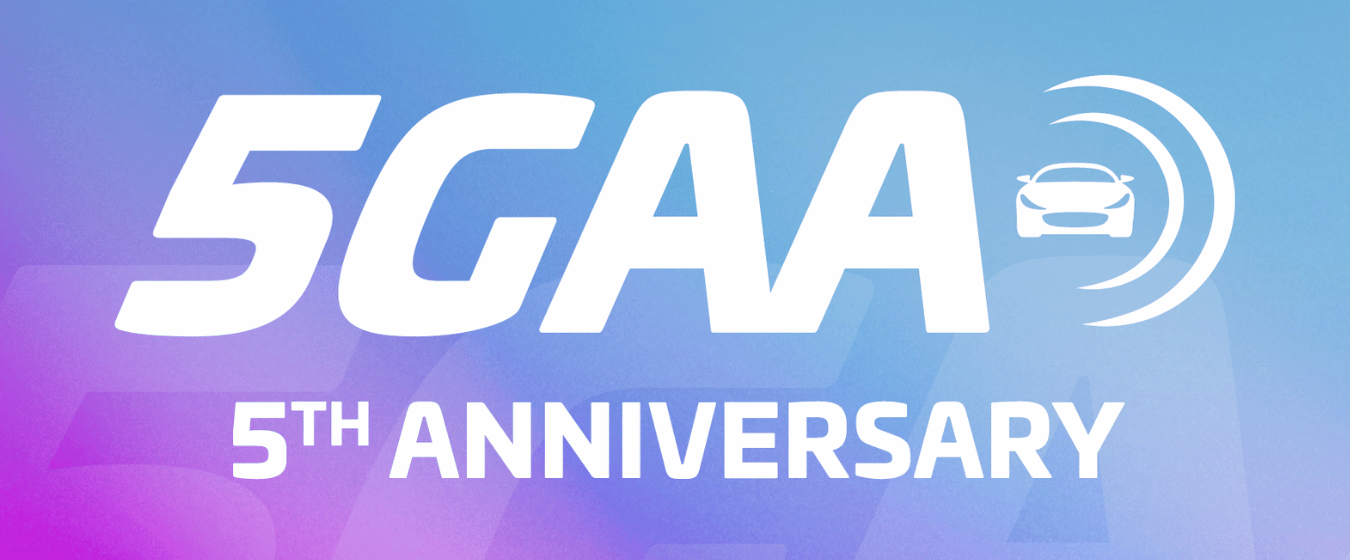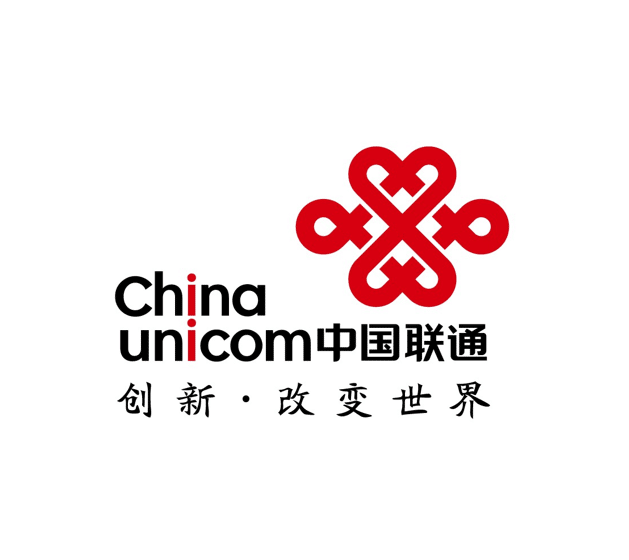
Federal Funding Opportunity for Wireless Technology: Safe Streets and Roads for All (SS4A) Grant Program
Through September 15, 2022, a Notice of Funding Opportunity (NOFO) from the U.S. Department of Transportation (USDOT) will be open for Safe Streets and Roads for All (SS4A) grants in FY22. It’s an opportunity for companies to apply for a part of $1 billion per year in FY22-26 grants to prevent roadway deaths and serious injuries.
The timing is fortuitous. Newly released traffic crash estimates from the National Highway Traffic Safety Administration (NHTSA) show that traffic fatality rates in 2021 are the highest since 2005. NHTSA projects a final tally of 42,915 lives lost during 2021 in traffic crashes nationwide.
Making transportation safer and more equitable
To support its goals, the SS4A program funds activities that will help lower fatalities on U.S. roads and highways. The program is also an opportunity to fund regional, local and Tribal initiatives aimed at making transportation equitable for all road users.
Equity is an important element in underserved communities, which are disproportionately affected by fatalities among vulnerable road users (VRUs). These users include pedestrians, cyclists and the growing number people using micro-mobility options such as e-bikes and scooters.
Underserved communities also have higher vehicular traffic volumes, trucking routes and major arterial roads. They are characterized by intersections that are unsafe or impassable by foot or bike, and an overall lower level and quality of walking and cycling infrastructure. NHTSA’s projections for 2021 show alarming increases in fatalities for pedestrians (13 percent), motorcyclists (9 percent) and bicyclists (5 percent), making the SS4A funding opportunity even more fortuitous for VRUs.
Applying C-V2X technology to prevent road fatalities
Many roadway deaths are preventable. Cellular-vehicle-to-everything (C-V2X) is a wireless technology that allows vehicles to communicate directly with each other (V2V), with roadside infrastructure (V2I) and potentially with pedestrians (V2P). C-V2X supports information sharing to facilitate applications that enhance safety for all road users.
NHTSA believes that safety applications supported by V2V and V2I could eliminate or mitigate the severity of up to 80 percent of non-impaired crashes. Also, connected vehicle technology is on the National Transportation Safety Board’s Most Wanted List of transportation safety improvements.
The following use cases illustrate the immediate impact of safety applications that use C-V2X technology:
- Red-light violation warning (RLVW)
More than half of all fatal and injury crashes happen at intersections (source). The most common cause of all urban crashes, drivers running red lights result in an average of seven fatalities and more than 1,000 injuries per day at signalized intersections across the country (source).

- Intersection movement assist (IMA)
Similar to RLVW, IMA safety applications can alert other drivers when someone is running a red light so they can take action to stop before entering the intersection. - Spot weather warnings
Inclement weather, which can result in road hazards such as icy patches on highways, are not easily detected by LIDAR sensors. Infrastructure-to-vehicle (I2V) applications can send a warning to approaching vehicles, reducing the potential for sharp drops in speed that can result in road incidents. - Traffic signal pre-emption
Aimed at shortening emergency response times to help save lives, this use case allows vehicles like ambulances and fire trucks to remotely trigger a green light. Related V2V applications share this information with nearby vehicles so drivers can take action to move out of the way, reducing congestion along the route to improve safety for first responders and road users alike. - School zone safety
C-V2X alerts drivers when they are entering an active school zone and notifies them of the reduced speed limit. Future applications might include automatically slowing vehicles as they approach an active school zone.
See more use cases below.
What you can’t see can hurt you, and C-V2X plays a critical safety role because it allows the vehicle to see more than the driver can see. Regular sensors keep vehicles safe in immediate surroundings; C-V2X provides more robust signaling to help vehicles see around blind corners and many other types of obstructions. It connects vehicles and roadside infrastructure that are not in each other’s line of sight and allows them to share information about traffic conditions.
How C-V2X fits with SS4A
SS4A accepts both Action Plan Grants and Implementation Grants, with the latter drawing upon the foundation of the former. The program calls out four selection criteria:
- Safety impact
- Equity, engagement, collaboration
- Effective practices and strategies
- Climate and sustainability, and economic competitiveness
Two notable considerations are project readiness and funds to underserved communities.
USDOT lists several sample activities for Implementation Grants that align closely with C-V2X, including these:
- Deploying advanced transportation technologies, such as the installation of connected intersection-based safety solutions and vehicle-to-infrastructure advisory speed limit systems (e.g., intelligent speed assistance — see above)
- Evaluating and improving the safety of intersections by considering innovative design changes, improved delineation, and advanced warning
- Creating safe routes to school and public transit services through multiple activities that lead to people safely walking and biking in underserved communities.
- Promoting the adoption of innovative technologies or strategies for the safety and protection of VRUs in high-traffic areas where commercial motor vehicles (CMVs), pedestrians, bicyclists, and motorcyclists interact.
Next steps
As part of the Bipartisan Infrastructure Law, SS4A is a discretionary program with $5 billion in appropriated funds over the next 5 years. A related opportunity opening up in late 2022 is the $500 million Strengthening Mobility and Revolutionizing Transportation (SMART) Grants from USDOT. Both SS4A and SMART provide a path to federal funding to build novel uses of C-V2X and 5G technologies into the nation’s infrastructure. To provide more visibility for industry stakeholders, USDOT has published a full list of funding opportunities with anticipated dates for 2022.
Applications built around C-V2X can help make intersections safer and reduce fatalities due to speeding in the use cases shown above, as well as in these:
- At-grade rail crossings — alerting emergency vehicles that a rail crossing is closed, enabling early rerouting and avoiding delays in life-saving calls
- Pedestrian crossings — detecting when a VRU is in the crosswalk ahead and warning approaching drivers to proceed with caution
- Incident clearance and response — sending alerts to drivers as they approach an emergency vehicle stopped in or along the roadway ahead, thereby helping to prevent secondary crashes
- Wrong-way driving — detecting drivers who go the wrong way on on-ramps and highways, then alerting the driver, nearby drivers, and law enforcement
These applications can also help make transportation equitable in underserved communities, fulfilling another important goal of SS4A.
Find out how to apply for SS4A grants here and in the USDOT’s “Safe Streets and Roads for All” webinar series.

5GAA White Paper on Misbehaviour Detection
Information in V2X packets is used by vehicles to make safety critical decisions: it is imperative that such information is correct and trustworthy, representing the true physical reality. 5GAA’s latest White Paper presents the causes behind misbehaviour, which is thereby defined as a wilful or inadvertent transmission of incorrect data within the V2X network, and offers a detailed view of the architecture of the Misbehaviour Management System. After initial identification through the Local Misbehaviour Detection (LMDB), some of these anomalies may be reported to a central authority, known as Misbehaviour Authority (MA), for remediation. The paper finally explores the existing regulations and standards, and the policy questions involved in the topic.
Find the full report here.

Live C-V2X demonstrations by 5GAA members in Atlanta, May 2022 | Video
In May 2022, the 5G Automotive Association (5GAA) came together in Atlanta for a workshop on “C-V2X: Ready to Deploy”, followed by a series of live C-V2X demonstrations. The demos took place in two different locations, the Alpharetta Infrastructure Automotive Technology Laboratory (iATL) and the Peachtree Corners Curiosity Lab, and were open to local authorities and the broader ecosystem stakeholders. Our members showcased cellular vehicle-to-everything services and devices using cellular networks, for a wide range of applications – as shown in the video!
In addition, you can check out here all the pictures of the face-to-face week in Atlanta.

5GAA releases a special Report on the occasion of its 5th Anniversary
The 5G Automotive Association marks its 5-year anniversary with the publication of an online booklet covering the main achievements from its early days to the present, amidst the “5 Years of 5GAA” celebrations.
Half a decade has passed since the 5G Automotive Association was founded with the aim of building bridges between the automotive, technology and telecommunications industries to develop end-to-end solutions for future mobility and transportation services. To commemorate such a significant date, the association has launched an exclusive booklet, free and available online, which takes the reader on a journey through the history of 5GAA from its very beginnings.
The report contains a series of interviews with founding members and key partners of the association, such as Pearse O’Donohue (Director of Future Networks at DG CONNECT at the EU Commision), Maja Bakran Marcich (Deputy Director-General of DG MOVE), Adrian Scrase (ETSI CTO and Head of the 3GPP Mobile Competence Centre) or Nicola Farronato (Head of Innovation at the City of Turin). It also includes two letters – signed by Christoph Voight, Chairman of the 5GAA Board, and Chief Technology Officer Maxime Flament –, a review of the history of 5GAA in numbers, and a case study on the successful deployment of C-V2X technologies in China. A number of core themes overarch the pages of the report and allow the reader to better understand some of the priority areas and key drivers of members’ join efforts: road safety, sustainability, collaboration, digital transformation, and more.
Join 5GAA on this exciting milestone by checking out the online report, fully available here. You can also follow the social media hashtags #5YearsOf5GAA and #5GAAnniversary both on Twitter and LinkedIn for more updates.
Enjoy the reading!

New Technical Report: Conformity Assessment Strategy Evaluation (CASE)
This 5GAA Technical Report presents the results of the 5GAA Work Item Conformity Assessment Strategy Evaluation (CASE). This study investigates a practical 5GAA strategy along with guidelines for Conformance Assessment (CA). The CASE Report focuses on the PC5 interface and intends to develop a proposal for a cost-effective, voluntary process for C-V2X Conformity Assessment which could be applied globally. In this document, you can read about the position of the Automotive Industry, the regional status of Conformity Assessment (China, Europe, North America, Japan and South Korea), lessons from other CA schemes, cost-benefit analysis, and a harmonised CA framework.
Read the full report.

Report on Automated Valet Parking: technology assessment and use case implementation description
This 5GAA Technical Report presents the results of the 5GAA Work Items Use Case Implementation Description Phase
II (UCID II) and Automated Valet Parking (AVP) with the focus on solutions using cellular public networks. Solutions
using cellular non-public networks or short-range direct communication technologies are also in the scope of these Work
Items, but the results will be published separately at a later stage.
Read the full report.

Live Trial of 5G Connected Car Concept in Blacksburg, Virginia | Video
Last March, the Commonwealth of Virginia held a live trial of a new driver and pedestrian safety concept that allows near-real-time notification of roadway hazards through 5G and edge technologies. The trial was one of the three conducted internationally by a historic public-private collaboration, organised by the 5G Automotive Association (5GAA) and eight member companies representing leading technology companies from around the globe. A related European live trial was conducted in 2021 in the city of Turin, Italy. The North American live trial, on the other hand, was conducted on the Virginia Smart Road operated by the Virginia Tech Transportation Institute in Blacksburg, VA. It was the first of its kind in North America.
To find out more, you can now watch this video explaining the tested concept:

5GAA discusses the role of non-terrestrial networks in the connectivity of the car of the future
Ubiquitous connectivity is an essential prerequisite to achieving a full-scale digital transformation of the automotive sector. Connectivity challenges and how the seamless integration of terrestrial and non-terrestrial network solutions can foster high-capacity global connectivity were at the heart of the Connectivity for the Car of the Future Symposium, hosted by the 5G Automotive Association (5GAA).
Berlin (Germany), 16 May 2022. The 5G Automotive Association (5GAA) and the European Space Agency discussed the crucial role of ubiquitous connectivity and the opportunities for space technologies to offer future solutions for the automotive sector during its “Connectivity for the Car of the Future Symposium.”
Today, over 200 million connected vehicles worldwide are equipped with applications sharing hazard and traffic warnings on the road. The automotive sector is undergoing a significant transformation: from a focus on vehicle performance to a focus on a fully digital, tailor-made digital experience, and customers increasingly expect a fully connected car. Ubiquitous connectivity is an essential prerequisite to achieving a full-scale digital transformation of the automotive sector. Ensuring the network’s reliability can be a challenge, particularly in rural or remote areas that still experience no or poor band coverage, and non-terrestrial networks can have a crucial role in deploying hybrid connectivity solutions for the car of the future.
To explore the connectivity challenges and how space solutions can support the car industry in connected mobility, the 5G Automotive Association organised a Symposium in collaboration with the European Space Agency (ESA). What does the future car look like? Which connectivity and business models are needed to enable? What is the place of space in the mix? These were some of the questions addressed by industry representatives of car manufacturers, connectivity providers, mobile network operators, satellite connectivity providers and decision-makers.
Satellite connectivity can complement terrestrial solutions in white spots and in case of outages and congestion. In this sense, Europe must accelerate the development of assets and capacities in this field to compete globally, provide the appropriate solutions for the automotive sector and fill in any potential gaps. Therefore, it is essential to ensure that all the stakeholders and their respective innovative roadmaps are aligned, as highlighted by Joseph Aschbacher, Director-General of ESA, in his welcome messagefor the event. As such, the car industry will be able to make the most of cutting-edge developments in the connectivity domain.
“We are pleased to collaborate with 5GAA to promote and build the connected car ecosystem of the future. Vehicles are rapidly becoming fully connected devices and drive investments into new-generation connectivity. Satellites and space-based technologies are key assets to complete terrestrial networks, build smart and hybrid systems and offer ubiquitous, secure, and sustainable connectivity. We look forward to continuing this intense exchange with the automotive value chain to join forces and build a truly European connected car architecture,” added Elodie Viau, Director, Telecommunications and Integrated Applications Directorate, ESA.
During the Symposium, car manufacturers and tier-1 suppliers discussed the mobility-related technology innovations, opportunities, requirements, and challenges, highlighting the crucial role of ubiquitous connectivity for the automotive sector and the increasing number of use-cases already developed by the automotive industry for both private and commercial vehicles.
Including non-terrestrial connectivity in the mix will bring many benefits, such as extending high connectivity to rural areas at a comparatively low cost and enabling digital services and autonomous driving applications. However, space solutions need to be integrated with the existing terrestrial solutions, as they will not replace them. In addition, the seamless integration of antennas technology on the car, and the smooth handover between the networks, are just some of the challenges that still need to be addressed. Therefore, speakers pointed out that these solutions need to be included in the 3GPP standardisation system, which is currently the integrational connectivity path, defining the terrestrial connectivity requirements.
Finally, all the stakeholders engaged in a lively discussion to map how the whole ecosystem can work together to address the connectivity challenges and develop targeted R&D, demonstrators and pilots and expand them into mature business models and strategic partnerships. Indeed, to enable cross-border coordination and integration of terrestrial and satellite connectivity solutions, the cooperation and alignment of various players and investments will be essential. In this area, ESA aims to provide the European automotive sector with the necessary support and expertise to maximise its positive social, economic and environmental impact and develop competitive car connectivity solutions.
“Use cases and requirements are already there, and ubiquitous connectivity will enable their full-scale deployment. Satellite solutions can play a crucial role in achieving this,” concluded Johannes Springer, Director General, 5GAA. “It is crucial to ensure the greatest alignment and cooperation between all the stakeholders involved. Let’s continue working together to bring the 3GPP standards to the satellite solutions and seamlessly integrate them with the terrestrial networks to provide solutions for the car of the future.”
Below the presentations showcased during the first session of the event:
Andreas Schaller, V2X Technology Strategy, Robert Bosch Mobility Solutions
Olaf Eckart, Senior Expert Cooperations R&D, Industry Customers, BMW
Jörg Plechinger, Head of Mobile Connectivity Plattform / Car2X, AUDI AG
Susanne Schulz, Head of Department Cooperative, Connected and Automated Mobility, Autobahn GmbH




China United Network Communications Co., Ltd.
China Unicom’s future products and services will develop towards “smartness”, using technologies such as the Internet of Things, cloud computing, and big data to intelligently process data and information

Autotalks Ltd.
Autotalks is a fabless semiconductor company devoted to vehicle-to-everything (V2X) communications for manned and autonomous vehicles.


